Oct 18, 2013
Pura Tirta Empul
F and I had initially planned to trek Mount Batur on our final day in Bali. However, for a number of reasons, we scrapped that plan (so I brought my trekking shoes for nothing?) and swapped it for some inland sightseeing and a visit to the Pura Tirta Empul, more commonly known as the temple of Holy Water Spring, in Tampak Siring.
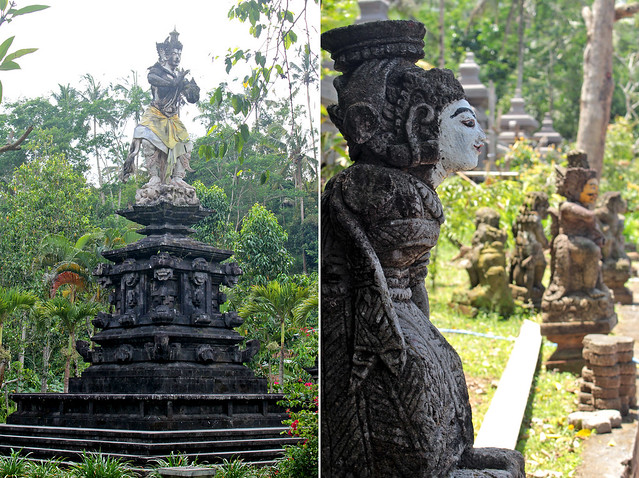
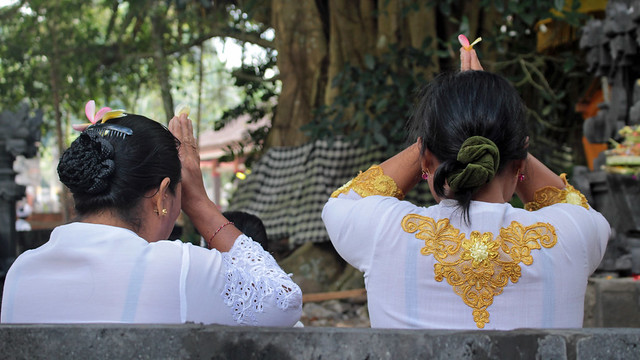

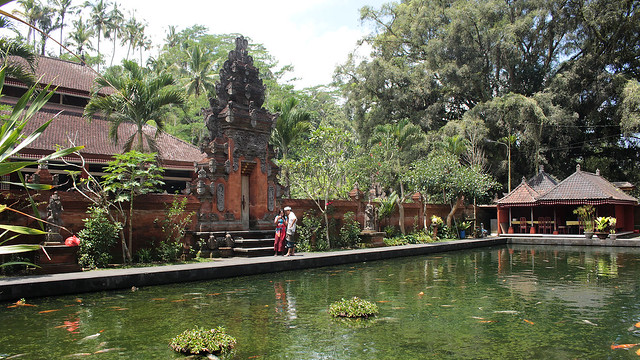
It may not be a directional temple, but it certainly plays an important part in Balinese culture, one which believes in the healing power of holy water. Although it has served the community for over 1,000 years, the current temple complex has been largely the outcome of a complete renovation in 1969.
Among the public temples which we had visited, this was the one we felt most at ease with the management. Non-devotee visitors pay a standard entry fee of 15,000 Rp (~ €1.00) per person, and the rental of sash and sarong was included. Additional donation may be given at visitor’s discretion.

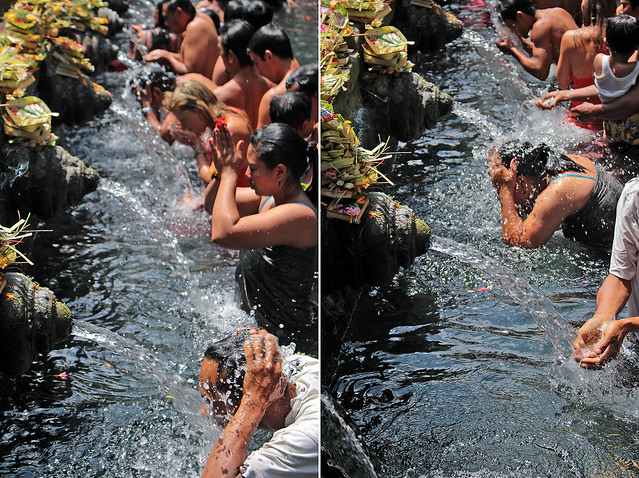
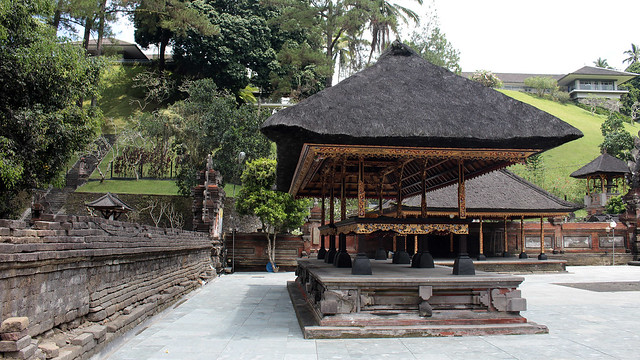
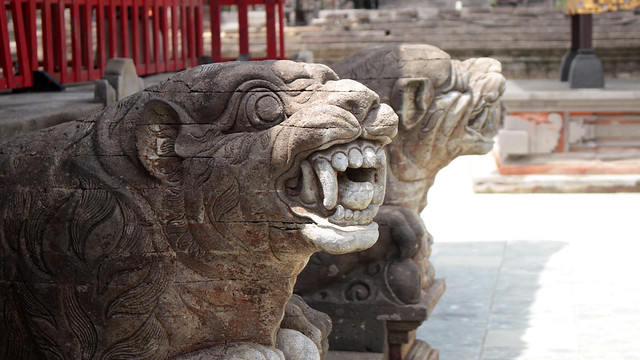
The layout around this temple initially confused me, for it is not in the linear axis that we’ve observed in other temples. Upon entering the compound, a group of devotees were praying under a large banyan tree before making way to the pools of the outer courtyard to bathe in.
Devotees prayed and made offerings by the water edge before entering what appeared to be cool waters for cleansing. At each fountain, a small prayer is made before one washes his/her face and head, rinses the mouth, and drinks for three times. It is not obvious from the photos but there are koi swimming in the pools too!

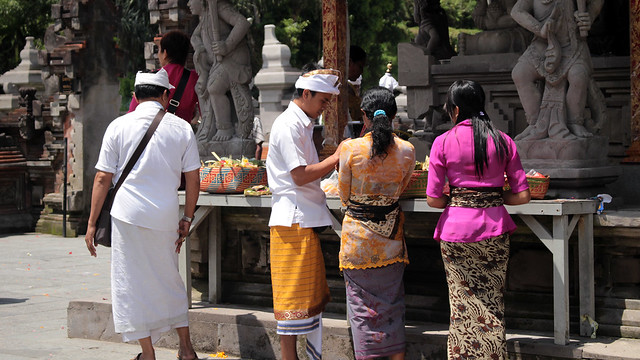
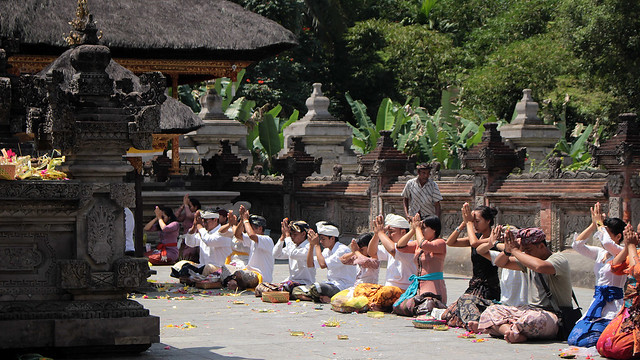

We exited the pool area on the left and walked slightly ahead to come to a tall candi bentar to our right. For the life of me, I could not recall right now if a kori agung was also present – most likely not. This central courtyard boasts several pavilions, and the main holy water pool that sources the bathing pools just a wall beyond.
Here, clear spring water from Lake Batur (not an insignificant distance away!) by way of underground rivers can be seen whirled to the surface and displacing the sediments around the mouths of the spring. It was fascinating to watch but difficult to photograph.

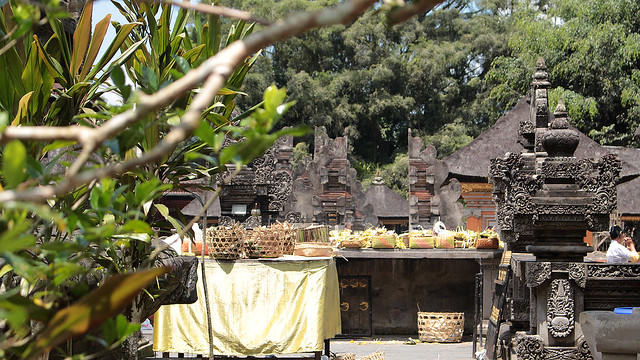
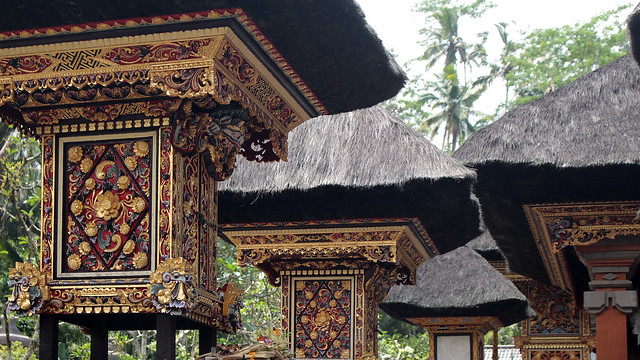
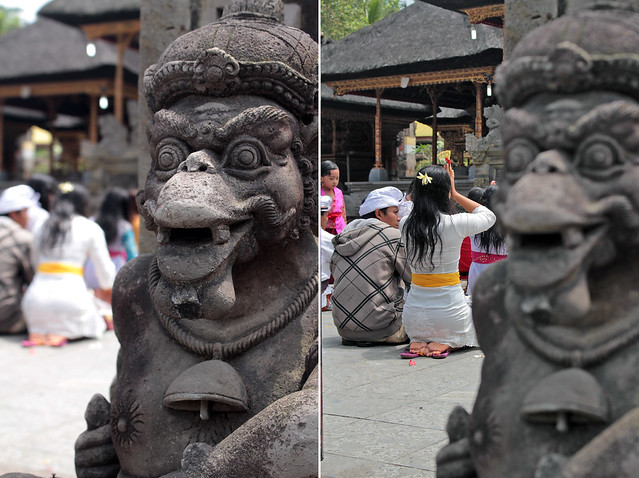
The inner courtyard is further separated by walls and entryway, and for the first time throughout the trip, we did not enter the jeroan for it had been exclusively barriered off for praying devotees only. And rightly so too. Even when we did enter in the other temples, we stayed quite a distance away from the main praying ground for we did not want to disrupt the praying process.
We left after a leisurely visit, and yet another first to our trip – our way out was marked by the presence of dozens of souvenir shops! The marketing method can be fairly aggressive when the vendors put their mind on it, but we successfully escaped without any unwanted purchases. And then it hit us, our few days on this island was coming to an end.
All posts in this series:
Bali: First impression
Bali: Postcards: Tirta Gangga
Bali: A feast at Bali Asli
Bali: Postcards: Masceti and Candidasa
Bali: Pura Lempuyang
Bali: Postcards: Amed and Tulamben
Bali: Pura Besakih
Bali: Pura Tirta Empul
Bali: Postcards: Inlands of Bali













so u guys didn’t went into the pool and perform the cleansing ritual as well??? ;)
No, we didn’t. On our own, we wouldn’t know what to do in the first place, and it wasn’t until we observed them that we had better idea. Moreover, this is not something that F practices, so he’s not comfortable trying to perform the same rituals.